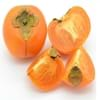Health Benefits
Cancer prevention, Cures gastro-intestinal troubles, Heart care, Increase in haemoglobin, Prevents diabetes
Asthma treatment, Heart care, Regulates Blood Sugar, Muscle pain relief, Reduces nervous tension
General Benefits
Anti-inflammatory properties, Boosts immune system, Digestive aid, Eye care, Flu treatment, Helps in weight loss, Maintains healthy cholesterol level, Treatment of common cold
Boosts immune system, Controls blood pressure, Digestive aid, Fights against infections, Helps in weight loss
Skin Benefits
Anti-aging benefits, Brightens and lightens complexion, Reduces wrinkles, Skin revitalization, Treatment of dark spots
Anti-aging benefits, Skin revitalization
Hair Benefits
Prevents hair loss, Promotes longer and healthier hair, Protects hair, Remedy for split ends, Treatment of dandruff
Protects hair
Allergy Symptoms
Abdominal pains, Anaphylaxis, Vomiting
Anaphylaxis, Breathing difficulty, Decrease in blood pressure, Dizziness, Skin rash, Swelling of face, Swelling of mouth, tongue or lips
Side Effects
Allergic reaction
Stressed heart, Nausea, Vomiting, Possibly unsafe during pregnancy
Best Time to Eat
As a snack in the late afternoon, Eat the fresh ones, avoid mixing with any other foods, don't eat after meal., Morning time (before lunch)
As a snack in the late afternoon, Don't consume at night and before bed, Morning time (before lunch), Strictly avoid empty stomach
Vitamin B5 (Pantothenic Acid)
Not Available
Vitamin C (Ascorbic Acid)
Vitamin K (Phyllochinone)
Phytosterol
Not Available
Calories in Fresh Fruit with Peel
Not Available
Calories in Fresh Fruit without Peel
Not Available
Calories in Frozen Form
Not Available
Season
Summer
All seasons
Varieties
Victoria, President, Czar, Ariel, Avalon and Oullins Gage
Australian Purple, Common Purple, Kapoho Selection, Pratt Hybrid, University Selection No. B-74, Waimanalo Selection and Yee Selection
Color
Pink, Purple, Red
Purple, Yellow
Inside Color
Yellow
Yellow
Taste
Juicy, Sweet, Tart
Sweet, Tart
Origin
Caucasus
Argentina, Brazil, Paraguay
Grows on
Trees
Not Available
Soil Type
Clay, Loam, Sandy loam
Sandy loam
Climatic Conditions
Cold
Frost free, Sunny, Warm
Facts about
- In china, plums are used for production of wine.
- A chemical called amygdalin found in plum seeds, turns into toxic compound in human body.
- Plum tree produces fruit 3-5 yrs after planting.
- Passion fruit tree can grow up to 20 feet in a year.
- More than 200 species of passion fruit are found near Amazon river.
- Oil extracted from its seeds is used in various cosmetics.
Top Producer
China
Brazil
Other Countries
Bosnia, Chile, India, Iran, Italy, Romania, Serbia, Turkey, United States of America
Colombia, Ecuador, Indonesia, Kenya, Peru
Top Importer
United Kingdom
Brazil
Top Exporter
Chile
Ecuador
Botanical Name
Prunus domestica
Passiflora edulis
Synonym
Not Available
Passiflora edulis f. edulis or Passiflora edulis f. flavicarpa
Subkingdom
Tracheobionta
Tracheobionta
Division
Magnoliophyta
Magnoliophyta
Class
Magnoliopsida
Magnoliopsida
Subclass
Rosidae
Dillenhidae
Order
Rosales
Malpighiales
Family
Rosaceae
Passifloraceae
Species
P. domestica
P. edulis
Generic Group
Rose
Passion Flower
Difference Between Plum and Passionfruit
We might think that Plum and Passionfruit are similar with respect to nutritional value and health benefits. But the nutrient content of both fruits is different. Plum and Passionfruit Facts such as their taste, shape, color, and size are also distinct. The difference between Plum and Passionfruit is explained here.
The amount of calories in 100 gm of fresh Plum and Passionfruit with peel is 46.00 kcal and Not Available and the amount of calories without peel is Not Available and 97.00 kcal respectively. Thus, Plum and Passionfruit belong to and category.These fruits might or might not differ with respect to their scientific classification. The order of Plum and Passionfruit is Rosales and Malpighiales respectively. Plum belongs to Rosaceae family and Passionfruit belongs to Passifloraceae family. Plum belongs to Prunus genus of P. domestica species and Passionfruit belongs to Passiflora genus of P. edulis species. Beings plants, both fruits belong to Plantae Kingdom.









